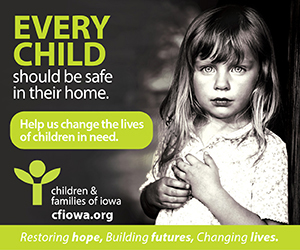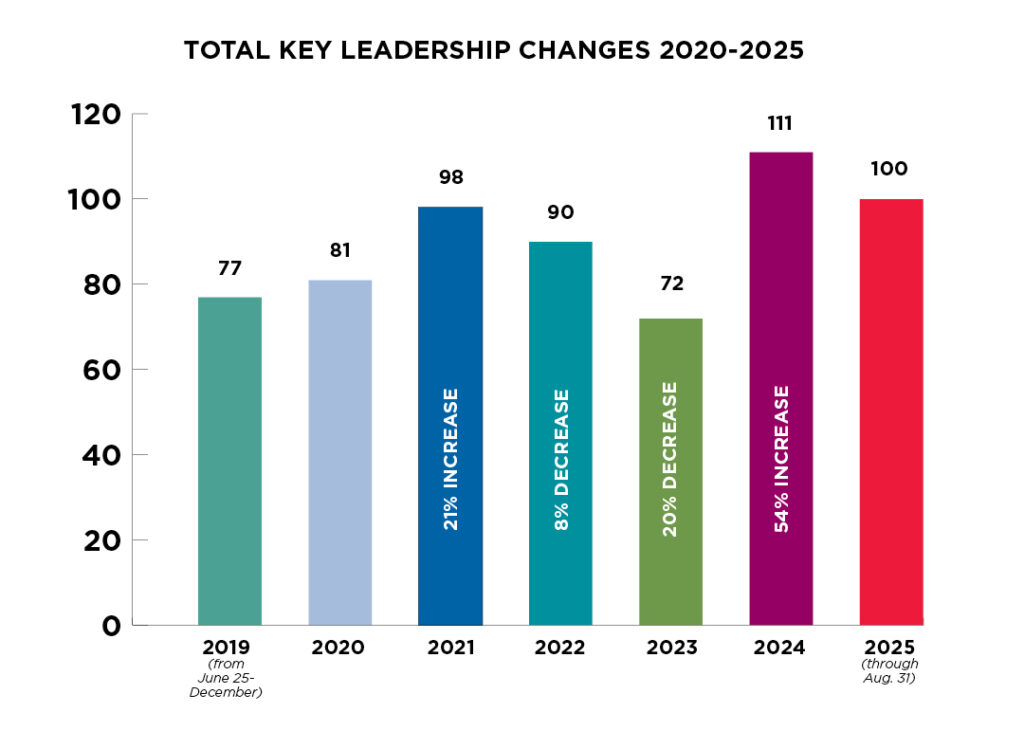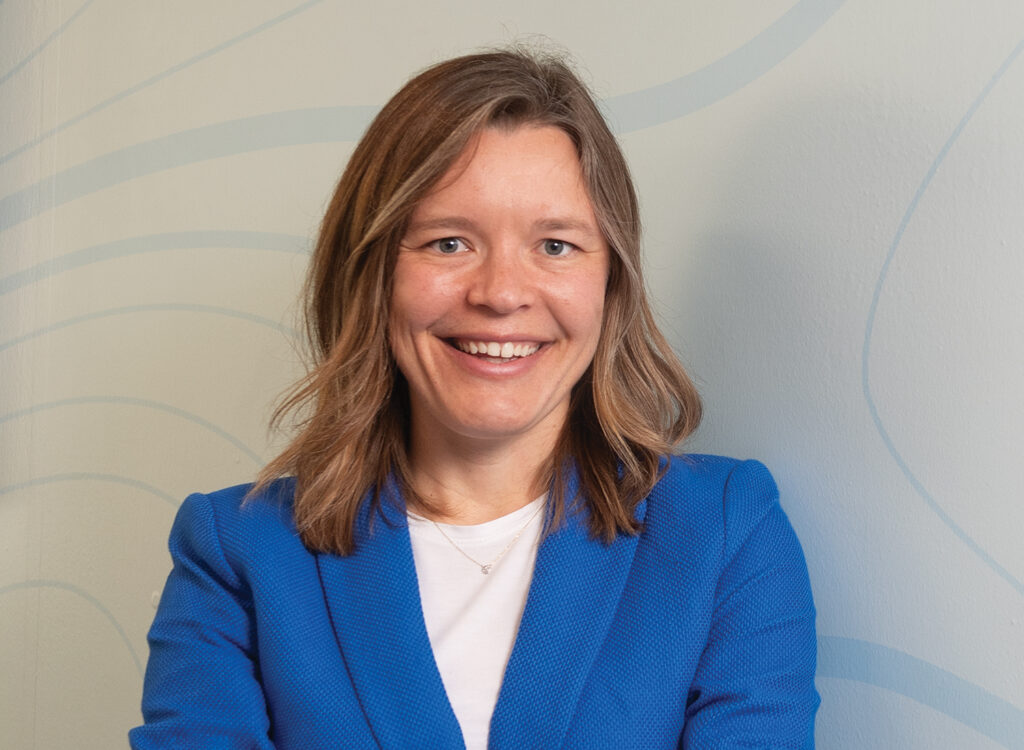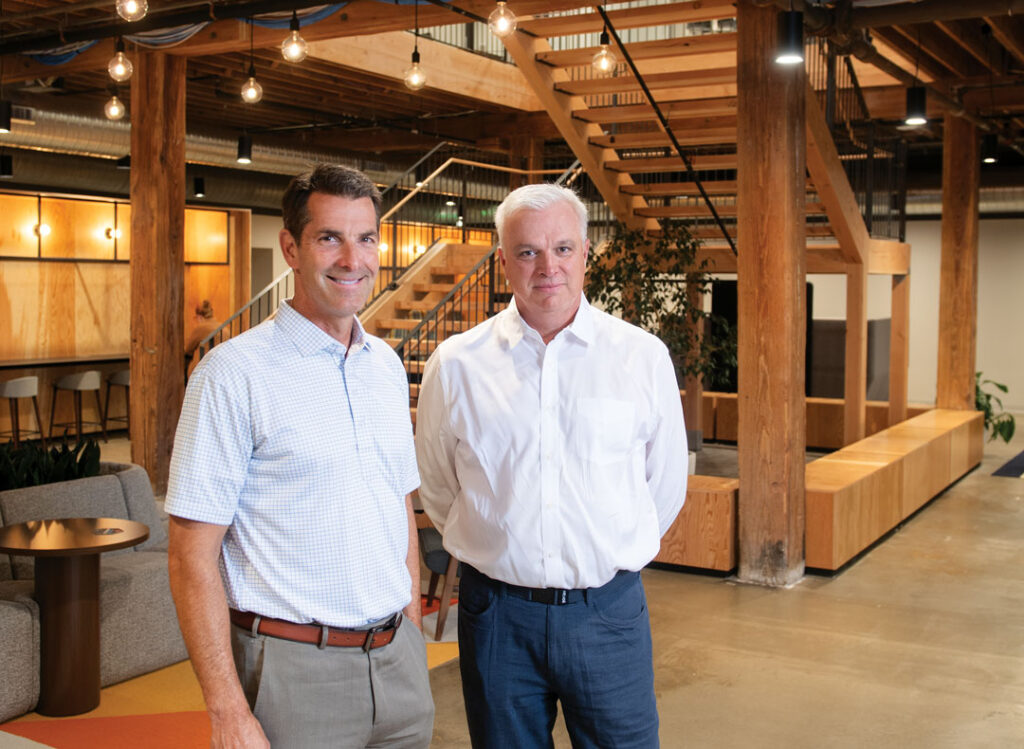A Closer Look: Anne Price
SBIR/STTR program director, Iowa Innovation Corp.

Eight months into the job with Iowa Innovation Corp., Anne Price is happy to reflect on the work that brought her here.
Price transitioned from retail management to sales support for the Star Tribune in Minnesota, before leaving office life as a full-time private child care provider for three years. She connected with IICorp, founded in 2011, through her previous work with Venture School at the University of Iowa, and started as a Small Business Innovation Research/Small Business Tech Transfer (SBIR/STTR) program coordinator in November.
As an aside, Price graduated from the University of Iowa with a B.A. in communications studies, and certificates in entrepreneurial management and museum studies.
“I have an eclectic background, a little bit of all the things I love wrapped up into one,” she said.
Today, Price serves an eclectic field across the state, helping Iowa companies advance through the SBIR/STTR process to attain federal grants and contracts available to niche technology and services.
Describe your current role as a program coordinator:
I’m working with Iowa Innovation Corp. … I’m going out and doing business development and talking with companies with high technology and innovative products that are going to disrupt the marketplace, and help them commercialize their technology for a three-phase research program backed by the Small Business Administration.
Eleven different federal agencies fund different dollar amounts for different projects — some are contracts and some are grants. So some are saying, “Please, do you have a technology or a business that could help with this specific, certain project?” … Or grants, where … they don’t have any solicitations. You just have an idea, and your technology would fit within the parameters of their agency, like the National Science Foundation.
What’s the best advice you’ve gotten since starting?
You are the expert, you know more than they do, so go in there and lead with confidence. My colleague told me that right when I started. I was leading my first introduction workshop and he wasn’t able to attend. I was like, “What am I going to do?” and he said, “Relax, you’re fine.”
Also, “Think of it as a box.” [Clients] either fit into it or they don’t. We’re just trying to help find the quality people that fit into the box, and in our business, it’s quality over quantity. If I have six people come to a workshop, that’s great; I don’t need 30 people to get through. I’m looking for very niche technology that’s innovative but evolutionary. …
The program can be technical, so when I’m giving the presentation, that was the best advice I got early on.
What should business owners understand about your role?
It’s a little bit business development and a little bit connecting resources. I’m trying to find businesses who are looking for nondilutive federal funding — the only thing you’re going to pay for is time, because it takes time to do that — as well as if I’m not the resource for you, I may be able to connect you to difference resources. I like to say that I’m a people person, and I thrive with people and connections, cultivating relationships and connecting the dots.
Iowa Innovation Corp. has pre- and post-award support that maybe a lot of people don’t know about. We pay for technical assistance and financial assistance to help people who are applying for this award, federal grant or contract.
We have pre-award support — you get an initial phone conversation with the consultants and with me — and post-award support: There’s some money involved if you win, non-dilutive [financing that does not require sale of company shares] $25,000 for an award of phase one, and an additional $25,000 for proof of phase two submission [to SBIR/STTR].
I’m trying to get them to go along and take advantage of the whole program, rather than just repeat for phase one. There’s incentive to at least apply for phase two. … You can win, in addition to the award from us, a total of $50,000 that you can use for things that you can’t use from the federal government, like travel, or hiring people, or going to conferences, that sort of thing.
What’s the most common concern or roadblock you run into?
I have a lot of scientists or clients that are one- or two-person teams, but if you’re applying for something that needs scientific merit, you’re going to have a very specific scientific reviewer, you’re going to need a more robust team. We have a consultant who can help them find team members, we have other connections at both universities [Iowa State University and the University of Iowa] — they can help with a more well-rounded team. …
Starting enough and having enough time. In my perfect world, it’s 12 to 15 weeks [before submitting a proposal], especially if you’ve not written a grant before. It’s about 130 hours that the client’s going to put into that, and I don’t think a lot of people realize that at the beginning.
How they use the 60 days is up to them. For me it’s the sweet spot where if they come in early enough I can help them register, and I can help connect them with a peer mentor and I can help connect them and their idea with a consultant to create a well-rounded, well-thought-out, smart proposal rather than just throwing something together.
What will IICorp look like in the next year?
We are transitioning to the Iowa Bioscience Development Center, and I don’t mean brick-and-mortar, I mean a different shift in our mission.
[Editor’s note: In July, IICorp began seeking a new CEO to lead the establishment of the Iowa Bioscience Development Center, a public/private partnership likely based in Des Moines. The deadline to turn in initial applications was Aug. 1.]
Last winter … a report came out saying that Iowa had low bioscience deal flows for venture capital, as well as companies and businesses. So we’re going through a large shift.
We’ll still have the Small Business Innovation Research (SBIR) and Technology Transfer (STTR), that will stay the same. That’s needed in Iowa and [has] been proven sustainable, but the other mission is going to change to help assist with some problem areas that have been discovered through this report.
What kind of goals do you have for the next year?
One year down the road, I would like to see the gains that were sustained. We’ve got more people participating, more people touched by the program, which was a big goal, as well as more women-owned and rural businesses involved. A lot more women-owned companies who are no longer afraid to talk about their technology or pitch, or talk about their business, as well as more female primary investigators on the grant, the projects, which is wonderful. …
I’d like to see more phase two awards. I’ve got a 90 percent track record with the consultants we work with. Ten of 11 have been funded that this one certain consultant has worked on. I want to sustain that. I feel like in the last three years there’s been a lot of growth, and knowledge and awareness about my program specifically, so I’d like to sustain the gains and continue to build the awareness. There’s a lot of good resources we have that people don’t know about or know how to take advantage of.
Where can people go to learn more?
People can go to www.iicorp.com. They can find me at monthly repeating events — I’m usually at 1 Million Cups. I go to a lot of events at Gravitate [Coworking], I try to be out and about in the community networking.
What have you been reading/watching/listening to?
I just finished “Daring Greatly” by Brene Brown. I have just started [“Empress Dowager Cixi: The Concubine Who Launched Modern China” by Jung Chang]. I went to China last October with my mom, and she got me this book for Christmas. … It’s [about] what it was like to be one of 1,000 [women] but the one to have a baby with the emperor, and then also to be the woman behind the curtain. It’s more of a cultural read.









